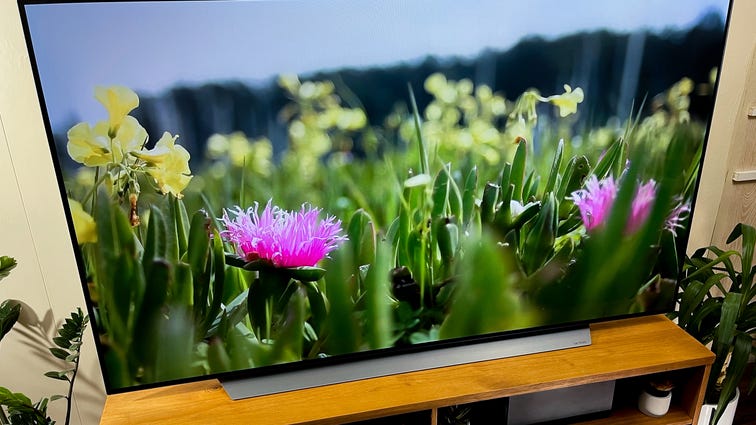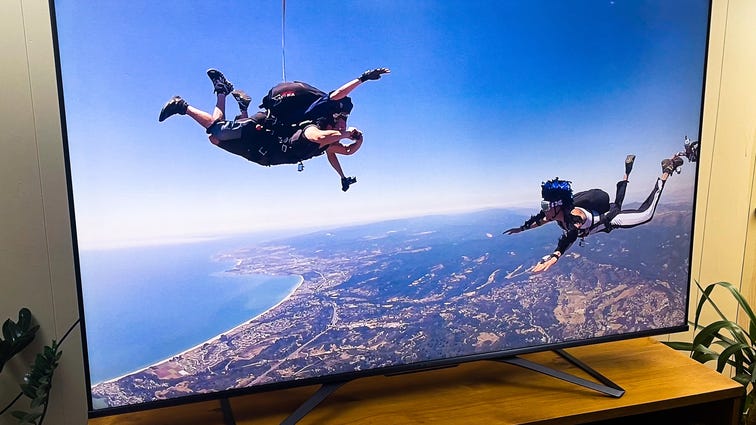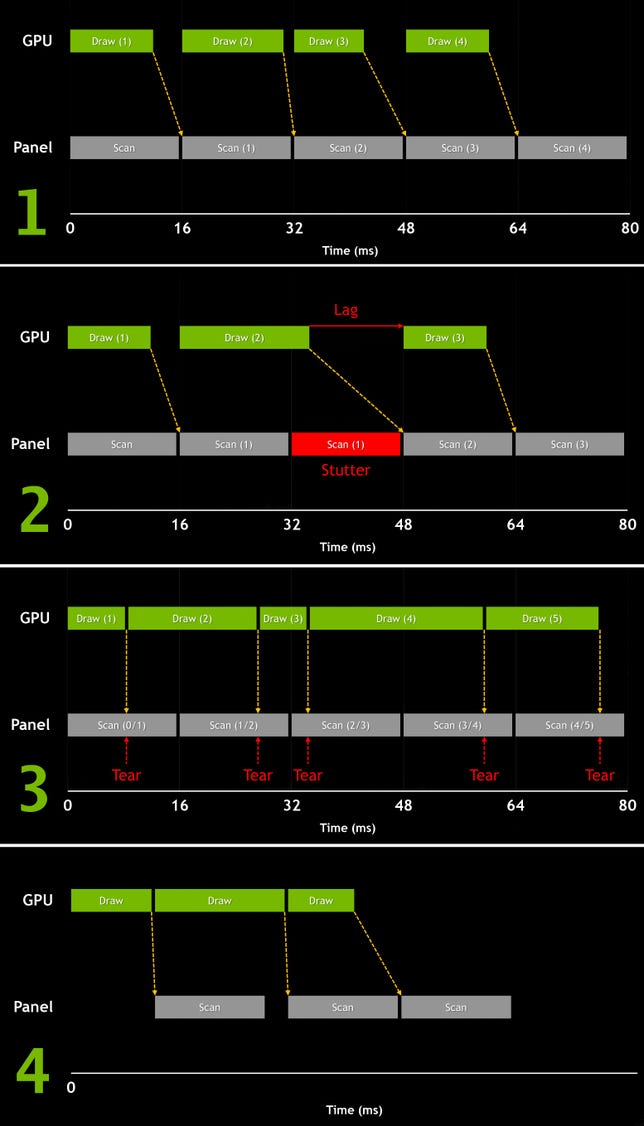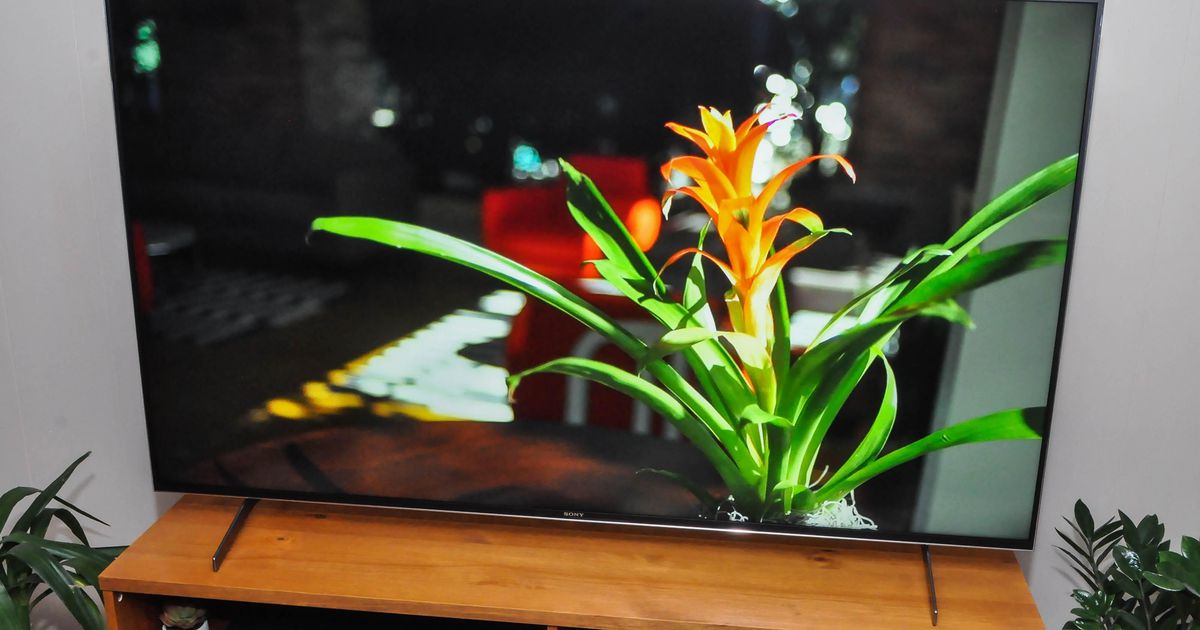Just about any TV will work with the PS5, Xbox Series X and Xbox Series S. All it needs is an HDMI input. However, if you want to take advantage of the latest next-gen graphics and features found in these new game consoles you’re going to need a new TV. Most TVs these days have Ultra HD 4K resolution, but only newer TVs have extras like 120 frames per second input and variable refresh rate, which increase smoothness and reduce choppiness and tearing.
You don’t have to spend a fortune on an 88-inch 8K behemoth to get these console-friendly features though. Some of the most important gaming TV features are available in 65-inch TVs that are priced below $1,000.
Best TVs for PS5 and Xbox
Below you’ll find a chart with all of the TVs we know on sale now that support advanced gaming features, including 120Hz input and VRR as well as the more common Auto Low Latency Mode, aka Auto Game Mode, and eARC. Below is a list of compatible TVs from the past two years, and you may still be able to find 2020 models on sale.
All the features listed below are roughly grouped under the HDMI 2.1 standard, but we’re in a sort of transition period for HDMI technology. As a result, not all of the TVs below include every feature nor deliver the full video and audio bandwidth that’s possible with HDMI 2.1.
Even more confusing, input capability can vary on the same TV. Behind the physical connection where you plug an HDMI cable is a subsection of the TV’s processing, namely a chip. These chips cost money, like everything else. In order to keep costs down, not every input on the TV is fully capable of all the latest features and frame rates. To put it another way, every road on Earth could be capable of highway speeds, but building them all that way would be expensive and rather pointless.
For example, one HDMI input might be capable of eARC, but not be able to handle 4K at 120Hz. Just something to keep in mind as you peruse. Frustratingly, several manufactures don’t include which inputs are capable of what online or in their manuals. We’ve reached out to them for clarification, and will update this chart when (if?) they let us know. Also, there are some important brand and model specifics that didn’t fit in the chart; please check the bullet points below for details.
Finally, the consoles themselves are in a transition period, too. The hardware of the PS5 console can technically support VRR, but unlike the Xbox Series X and Series S, it’s not enabled yet. Sony’s PlayStation 5 FAQ says VRR will be added via a future software update.
One point to note on VRR: Earlier this year, many AV receiver brands were caught out with a bug that prevented 4K video at 120Hz from displaying. As of the time of publishing Yamaha is the only brand yet to release a fix or updated 8K models.
Best TV for PS5 and Xbox Series X, Series S in 2021
2021 TVs for PS5 and Xbox
| Brand | Model | 65-inch price | 4K 120Hz Input | VRR | ALLM/AUTO | eARC |
|---|---|---|---|---|---|---|
| LG | G1 | $2,500 | HDMI 1-4 | Yes | Yes | HDMI 2 |
| Nano 90 | $1,300 | HDMI 3, 4 | Yes | Yes | HDMI 3 | |
| QNED 90 | $2,000 | HDMI 3, 4 | Yes | Yes | HDMI 3 | |
| C1 | $2,100 | HDMI 1-4 | Yes | Yes | HDMI 2 | |
| A1 | $1,800 | No | No | No | HDMI 3 | |
| Nano 75 | $900 | No | No | Yes | HDMI 2 | |
| 70 series | $700 (70 in) | No | No | Yes | HDMI 2 | |
| Samsung | QN900A | $4,000 | Yes | Yes | Yes | Yes |
| QN800A | $3,000 | Yes | Yes | Yes | Yes | |
| QN90A | $2,100 | Yes (55 in and up) | Yes (not 43 in) | Yes | Yes | |
| QN85A | $1,900 | Yes | Yes | Yes | Yes | |
| Frame | $1,700 | Yes | Yes (55 in and up) | Yes | Yes | |
| Q80A | $1,400 | Yes (55 in and up) | Yes (not 50 in) | Yes | Yes | |
| Q60A | $1,000 | No | No | Yes | Yes | |
| Sony | A90J | $3,800 | Yes | Yes* | Yes | Yes |
| X80J | $1,000 | No | No | No | Yes | |
| A80J | $2,200 | Yes | Yes* | Yes | Yes | |
| X95J | $2,000 | Yes | Yes* | Yes | Yes | |
| X90J | $1,350 | Yes | Yes* | Yes | Yes | |
| X85J | $1,100 | Yes | Yes* | Yes | Yes | |
| TCL | 8 | $2,000 | No | No | No | No |
| 6 8K | $2,200 | No | Yes | Yes | Yes | |
| 6 4K | $950 | Yes (x2) | Yes | Yes | Yes | |
| Vizio | OLED | 1900 | HDMI 2, 3 | Yes | Yes | HDMI 1 |
| P series | 1300 | HDMI 3, 4 | Yes | Yes | HDMI 1 | |
| M series | 900 | No | Yes | Yes | HDMI 1 | |
| Hisense | U9 | $3500 (75″) | No | No | No | No |
| U8 | $1,250 | HDMI 3, 4 | VRR | No | HDMI 3 | |
| U7 | $1,000 | No | Freesync | No | Yes |
*Available via a firmware update at a later date (just like Sony’s 2020 models).
2020 TVs
You might still be able to find some of last year’s TVs on sale. Many had 120 Hz inputs, eARC and more, though not quite to the extent of the newer models. Here’s a look at the TVs from 2020 and what they could do.
2020 TVs for PS5 and Xbox
| Brand | Model | 65-inch price | Max input Hz | VRR | ALLM/AUTO | eARC |
|---|---|---|---|---|---|---|
| LG | UN85 | $765 | 120Hz (HDMI 3,4) | Yes | Yes | HDMI 3 |
| Nano85 | $1,000 | 120Hz (HDMI 3,4) | Yes | Yes | HDMI 3 | |
| Nano90 | $1,200 | 120Hz (HDMI 3,4) | Yes | Yes | HDMI 3 | |
| Nano91 | $1,000 | 120Hz (HDMI 3,4) | Yes | Yes | HDMI 3 | |
| CX | $2,200 | 120Hz (All) | Yes | Yes | HDMI 2 | |
| GX | $2,500 | 120Hz (All) | Yes | Yes | HDMI 2 | |
| BX | $2,000 | 120Hz (HDMI 3,4) | Yes | Yes | HDMI 3 | |
| Samsung | Q70T | $1,200 | 120Hz | Yes | Yes | Yes |
| Q80T | $1,700 | 120Hz (HDMI 4) | Yes | Yes | HDMI 3 | |
| Q90T | $2,000 | 120Hz | Yes | Yes | Yes | |
| Q800T (8K) | $2,700 | 120Hz | Yes | Yes | Yes | |
| Sony | X900H | $1,400 | 120Hz (HDMI 3,4) | Yes | Yes | HDMI 3 |
| TCL | 6-Series | $950 | 4K60/1440p120 | Yes | Yes | HDMI 4 |
| Vizio | OLED | $1,500 | 120Hz (HDMI 2,3) | Yes | Yes | HDMI 1 |
| P | $950 | 120Hz (HDMI 3,4) | Yes | Yes | HDMI 1 | |
| PX | $1,500 | 120Hz (HDMI 3,4) | Yes | Yes | HDMI 1 | |
| M-Series | $600 | 60Hz | Yes | Yes | HDMI 1 |
Notes and specifics
- Prices are current as of press time but may fluctuate.
- There are some TVs that fit the criteria but weren’t included because they’re so expensive, namely 8K TVs like LG’s ZX series and Samsung’s Q950TS and Q900TS series.
- The PS5 and Series X can also output 8K resolution to compatible TVs, but we consider 4K/120Hz, VRR and other enhancements like ray tracing and even HDR more important than 8K for gaming.
- Samsung doesn’t specify which inputs can handle 4K120 or eARC. It is unlikely that all do, but when we asked, the company didn’t clarify. We did review the Q80T, however, and can confirm that Input 3 is compatible with eARC and Input 4 with 4K120.
- Sony says the software update(s) that enables VRR and ALLM on the X900H is coming “at a later date.” It’s been saying that for over a year now.
- Vizio The 2020 M-Series is only 60Hz but has VRR.
- TCL The 2020 6-Series can only accept 4K at 60Hz, but can accept 1440p at 120Hz.
Our picks
Of the TVs listed above that we’ve already reviewed, these are the ones we can recommend among our picks for the best TV for PS5, Xbox Series X and Xbox Series S game consoles. We expect to review more soon and we’ll be updating this list of the best TV for PS5 options periodically. Note that all of the prices shown below are for the 65-inch sizes and we’ve included our input lag measurements for both 1080p and 4K HDR sources.
David Katzmaier/CNET
The 2021 LG G1 series is the best-performing TV we’ve ever reviewed, though only slightly more than less expensive models. It’s our pick for the best TV for PS5, Xbox Series X and Xbox Series S game consoles. It has super-low input lag to go along with its excellent image quality.
1080p input lag: 13.1ms
4K HDR input lag: 13.1ms
Sizes: 55-, 65-, 77-inch.
Read our LG G1 OLED review.

Sarah Tew/CNET
LG’s C1 offers image quality that’s close to the top-of-the-line G1, and still better than any non-OLED TV, but for less money. It’s a great choice for gamers who want excellent picture but with a smaller hit to the wallet.
1080p input lag: 13.1ms
4K HDR input lag: 13.1ms
Sizes: 48-, 55-, 65-, 77-, 83-inch.
Read our LG C1 review.

David Katzmaier/CNET
The Hisense U8G offers tremendous brightness for gamers who want to play during the day and don’t have light control in their chosen gaming space. While there are a couple of TVs that are brighter, all are a lot more expensive. Contrast and color is good too, though HDR is a step behind the competition.
1080p input lag: 15ms
4K HDR input lag: 15ms
Sizes: 55-, 65-inch.
Read our Hisense U8G series review.

David Katzmaier/CNET
If OLED isn’t your thing, Samsung’s QN90A offers the best non-OLED picture quality we’ve ever seen. It’s incredibly bright, with minimal blooming from the local dimming backlight. It also has the lowest input lag we’ve ever measured on a TV.
1080p input lag: 10ms
4K HDR input lag: 10ms
Sizes: 50-, 55-, 65-, 75-, 85-inch.
Read our Samsung QN90A review.
120Hz input explained
Despite TVs being capable of 120Hz refresh for well over a decade, the ability to input 120Hz is a far more recent development. This is largely due to the fact that other than a fairly beefy gaming PC, there just haven’t been any 120Hz sources. That all changes with the PS5 and Series X. Some of the TVs on our list can accept 4K at 120Hz on all HDMI inputs. Others can only do so on select inputs and one, the TCL 6-Series, can only accept 120Hz at lower-than-4K resolution (1440p).
The Xbox Series S can also output 4K at 120Hz, but internally the game is rendered at a lower resolution (1440p) and upscaled before it’s sent to your TV.
For more info, check out the truth about 4K TV refresh rates and beware fake 120Hz refresh rates on 4K TVs.

Nvidia’s G-Sync works similar to VRR. Ideally 1. the video card creates an image in enough time for the TV to refresh 60 times each second. Sometimes it takes longer to render the scene, 2. so the TV is sent a duplicate of the previous frame. The image stutters and your mouse/controller movements become inaccurate. You could disable v-sync in your video settings so there’s less or no judder, but the image tears, 3. VRR, like G-Sync and ATI’s FreeSync, lets the display and video card work together to figure out the best frame rate, 4.
Nvidia
VRR
VRR, or variable refresh rate, is a new feature that you’d probably be surprised wasn’t already a thing. All modern TVs have a fixed refresh rate. A 60Hz TV is going to refresh, or create, a new image 60 times a second. The problem is a new console might not be ready to send a new image.
Let’s say you’re in the middle of a huge boss battle, with lots of enemies and explosions. The console struggles to render everything in the allotted time. The TV still needs something so the console might send a duplicate of the previous image, creating juddering on screen, or it might send a partially new image, resulting in the image looking like someone tore a page off the top and revealed the new page below.
VRR gives the TV some flexibility to wait for the new frame from the console. This will result in better gaming performance with smoother action and less tearing.
All the TVs below have VRR. For more info, read how HDMI 2.1 makes big-screen 4K PC gaming even more awesome.
ALLM/Auto Game Mode
Game mode turns off most of the image-enhancing features of the TV, reducing input lag. We’ll discuss input lag below, but the specific feature to look for is called either Auto Low Latency Mode or Auto Game Mode. Different manufacturers call it one or the other, but the basic idea is the same. Sensing a signal from the console, the TV switches on game mode automatically. This means you don’t need to find your TV’s remote to enable game mode. Not a huge deal, but convenient. All the TVs listed above have, or will have, one or the other.
What about input lag?
One thing missing from the chart above is any listing for input lag, or how long it takes for the TV to create an image. If this is too high, there’s a delay between when you press a button on the controller and when that action appears on screen. In many games, like shooters or platformers, timing is crucial and a TV with high input lag could hurt your performance.
As a longtime console gamer myself, I can easily notice the difference between high (greater than 100ms) and low input lag (sub-30ms). The good news is, most modern TVs have input lag that’s low enough that most people won’t notice it. Largely gone are the days of 100-plus-millisecond input lags… at least when you enable game mode.
So as long as the TV has a game mode, you’re probably fine, though it’s worth checking CNET’s reviews for the exact numbers to see if it has low input lag. Lower, in this case, is always better.
eARC
While not a console feature, eARC is a next-gen TV feature to keep in mind. It’s the evolution of ARC, or Audio Return Channel. This sends audio from a TV’s internal apps (such as Netflix or Vudu), back down the HDMI cable to a receiver or soundbar. With eARC, newer formats like Dolby Atmos can be transmitted as well.
The issue is in many cases, eARC often precludes higher resolutions or frame rates on the same input. So if you’ve connected your PS5 to your receiver and the receiver to the TV, you can have eARC audio back from the TV or 4K120, but usually not both. This is only important if you plan on using the internal apps in a TV (as in, not a Roku or Amazon streaming stick) and you want to use the new audio formats via eARC.
For more info, check out HDMI ARC and eARC: Audio Return Channel for beginners and HDMI 2.1: What you need to know.
As well as covering TV and other display tech, Geoff does photo tours of cool museums and locations around the world, including nuclear submarines, massive aircraft carriers, medieval castles, airplane graveyards and more.
You can follow his exploits on Instagram and YouTube, and on his travel blog, BaldNomad. He also wrote a bestselling sci-fi novel about city-size submarines, along with a sequel.
